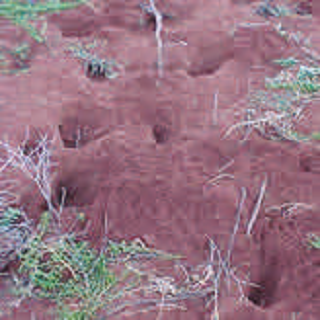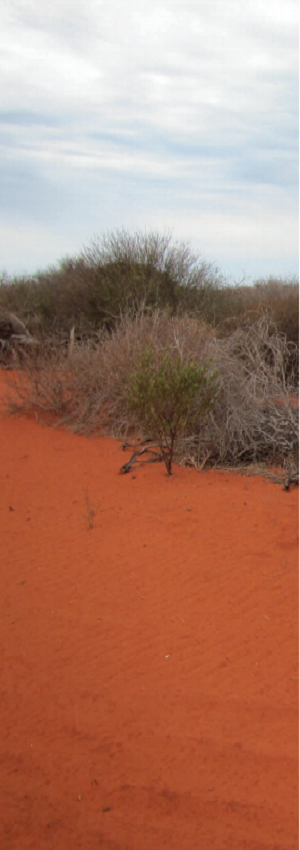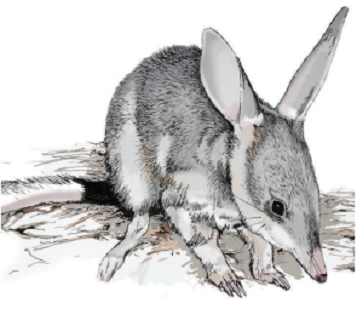Bilby
Bilby
Macrotis lagotis
Description

| Head-body 550mm |
Tail 300mm |
Weight 1.5-3kg |
The bilby is a long-eared bandicoot with powerful claws. Like other bandicoots, the bilby has a backward facing pouch that keeps the dirt out when it is digging. Unlike other bandicoots, bilbies dig burrows. They rest in their burrows during the day and emerge at night to feed.
Diet and habitat

Bilbies dig burrows that spiral downwards and may reach 3m long and nearly 2m deep. Burrows usually have only one entry/exit. After spending the day resting in burrows, bilbies emerge at night to dig for termites, grubs, ants, fungi and bulbs (foraging area pictured). They also eat other foods like seeds and fruit.
Breeding

| Gestation 2 weeks |
No. young 1-2 |
Weaned 3 months |
Bilbies may start breeding at less than six months of age and can breed throughout the year. They take advantage of good seasons in desert environments with females able to produce up to four litters a year. Young stay in the pouch for ten weeks before being suckled in the burrow for another two weeks prior to weaning.
Distribution

Bilbies once inhabited arid and semiarid regions throughout Australia but are now restricted to scattered populations in northern Western Australia, central Northern Territory and south-west Queensland. In Shark Bay, bilbies bred in captivity were successfully released into Francois Peron National Park as part of the Project Eden conservation initiative.
Status

Threats include feral cat and fox predation, bushfires, and food and habitat competition associated with rabbits and grazing stock.
Fact sheet
SHARK BAY
World Heritage



